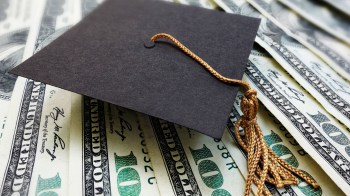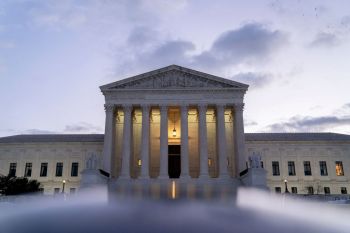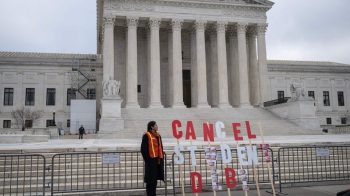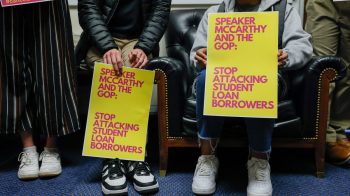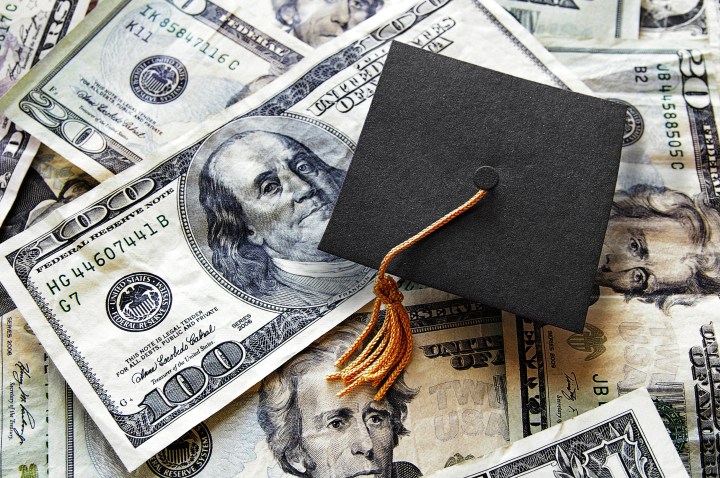
Which student loan relief plan makes the most sense for you?
Share Now on:
Which student loan relief plan makes the most sense for you?

Update (2/23/24): The Biden administration announced this week that it will forgive $1.2 billion in student loans for about 153,000 borrowers who are enrolled in the government’s Saving on a Valuable Education plan. We have details on how the SAVE plan works below.
President Joe Biden’s plan to forgive up to $20,000 in student loan debt per borrower was struck down by the Supreme Court earlier this year, leaving millions of Americans without the relief they were counting on. In total, Americans owe $1.78 trillion in student loan debt.
After a three-year COVID-19-related pause on federal student loan payments, interest resumed accruing on Sept. 1; payments resume in October.
To help borrowers, the U.S. Department of Education has announced that payments missed between Oct. 1, 2023, and Sept 30, 2024, will not be “considered delinquent, reported to credit bureaus, placed in default, or referred to debt collection agencies.”
The Biden administration has found other ways to help borrowers, including revamping one of its payment plans and forgiving $39 billion in federal student loans by fixing administrative mistakes.
We asked student debt relief attorneys to help us navigate some of the different options available to borrowers. If you’re already in a repayment program, you may be able to switch if you meet the requirements.
Income-driven repayment plans
Borrowers of federal student loans can make payments based on a percentage of their discretionary income and family size under one of four income-driven repayment plans offered by the federal government. Check this Education Department list to see if your federal loan is eligible for an IDR plan.
The department’s Saving on a Valuable Education plan has replaced its Repay as You Earn program.
“It’s a really great option for repayment and much better than what [else is] available right now,” said Natalie Jean-Baptiste, a student debt relief attorney based in New York.
SAVE raises the level of nondiscretionary income. This means that borrowers earning about $15 an hour, or 225% of the federal poverty level, will not have to make a monthly payment until their income rises, the White House said.
SAVE also cuts payments in half for undergraduate loans, from 10% to 5% of discretionary income. If you have undergraduate and graduate loans, you’ll have to pay a weighted average of between 5% and 10% of your income based on your original principal balance.
Those already enrolled in REPAYE will be automatically transferred to SAVE. If you’d like to apply to the SAVE program, enroll here.
Unlike other IDR plans, SAVE doesn’t have negative amortization — when the monthly payment isn’t enough to cover the interest, so that principal grows instead of declines.
Under SAVE, those with original principal balances of $12,000 or less will see their remaining balance forgiven after 10 years of payments. For loans over $12,000, the amount of time until loans are forgiven grows by one year for each additional $1,000 owed. So if your original balance was $13,000, your loan should be forgiven after 11 years of payments.
You don’t get this type of loan forgiveness with the other income-driven repayment plans, said Joshua Cohen, a student loan lawyer with his own firm, Cohen Consumer Law.
If you have a Perkins Loan or certain Federal Family Education Loans and you want to apply for SAVE, you have to consolidate them into direct loans.
FFEL Plus Loans that were made to parents and FFEL Consolidation Loans that repaid any PLUS loans made to parents are ineligible. (FFEL loans are offered by private lenders, but backed by the federal government, while a Perkins Loan is a now-discontinued low-interest loan that was once offered by the government.)
The other income-driven repayment plans
In addition to SAVE, the Education Department has three other income-driven repayment plans: Pay As You Earn, Income-Based Repayment and Income-Contingent Repayment.
Under all four plans, remaining balances after 20 to 25 years of payments will be forgiven (see this link for more details).
Jean-Baptiste said income-driven plans are designed to be affordable and can be a better alternative to the Standard Repayment Plan.
The Standard Repayment Plan is the default plan for federal student loan borrowers. Borrowers save on interest because they pay off their loans sooner than in other repayment plans but may have higher monthly payments. Fixed payments are made for up to 10 years, or for consolidated loans, up to 30 years.
“Depending on the balance and the interest rate, the standard payment could be more like a mortgage payment,” Jean-Baptiste said. “It could be over $1,000 a month. I’ve seen upwards of $3,000 a month for a standard payment.”
But she pointed out that sometimes the amount you would have to pay in an income-driven repayment plan might be the same as the Standard Repayment Plan, so that’s an instance where trying to enroll in an IDR plan wouldn’t make financial sense.
The Education Department is phasing out the PAYE and ICR plans. Borrowers will no longer be able to apply for PAYE after July 1, 2024, according to final regulations from the department, but borrowers who are already in the plan will not have to switch.
In the PAYE program, borrowers generally pay 10% of their discretionary income, but to be eligible, the required payment would have to be less than what would be paid as part of the Standard Repayment Plan.
All federal student loans qualify for the ICR plan, where you pay the lesser of these two options: 20% of your discretionary income, or the amount you “would pay on a repayment plan with a fixed payment over the course of 12 years, adjusted according to your income,” according to the Education Department.
ICR is the only income-driven repayment plan that those with Parent PLUS loans qualify for, said Jennifer Weil, a student debt relief and bankruptcy attorney based in New Jersey. Like PAYE, new borrowers won’t be able to enroll after July 1, 2024, although the program will continue to be available to future borrowers with consolidated Parent PLUS loans.
With the IBR plan, you generally pay 10% of your discretionary income if you’re a new borrower on or after July 1, 2014, and 15% of your discretionary income if you borrowed before that date. This plan will still be available even with the introduction of SAVE. But under the department’s new regulations, you cannot choose this plan if you have made 60 or more payments on REPAYE or SAVE after July 1, 2024. IBR is the only repayment plan available to those with FFEL loans.
One potential disadvantage of income-driven repayment plans is that you could be taxed once your loans are forgiven. Under a COVID-related law, forgiven debt will not be counted as income, and is therefore tax-free, through 2025. But that could change if provision is not extended or made permanent.
By then, attorney Joshua Cohen said he hopes Congress makes loan forgiveness nontaxable. And if it’s not, at the end of the day, your tax bill will still be lower than your loan, he said.
If you’re still unsure which repayment plan is best for you, the Education Department’s loan simulator can help you choose.
Public Service Loan Forgiveness
There are other options outside of the IDR repayment plans, like the Public Service Loan Forgiveness program. Under this program, student loans may be forgiven after you make 120 qualifying monthly payments (which will take at least 10 years) as part of an income-driven repayment plan or the Standard Repayment Plan while working full-time for the government or a nonprofit organization. Cohen noted that the amount forgiven is not taxable.
One disadvantage: Loans cannot be paid off early. You still need to make 120 separate monthly payments, per the department’s website.
The program has been criticized for its confusing rules, low acceptance rate and accounting errors. But as part of Biden’s student debt relief program, the administration is making a one-time correction to the amount of qualifying payments borrowers have made as part of income-driven repayment plans.
As a result, more than 800,000 U.S. borrowers will have $39 billion in federal student loans forgiven. The Education Department began notifying eligible borrowers on July 14 and will continue notifying them until next year. Perkins, Health Education Assistance Loans or commercially held FFEL loans must be consolidated before the end of this year to get the full benefit of the adjustment, the department website says.
Refinancing student loans
Federal student loan borrowers also have the option of looking for a lower interest rate with a private lender to refinance their loans — basically, swapping one type of loan for another.
“You’re not consolidating with the Department of Ed, you’re going outside of the federal system,” Weil said.
While you may end up getting a better rate, Weil generally doesn’t recommend this option.
“Maybe you’re making a bunch of money now, and you’ve got great credit, and you can qualify for the superlow interest rate from this private lender. Those are all circumstances that point in favor of doing the refi,” Weil said. “But what happens if you lose your job? What happens if your pay gets cut, if we hit a recession? There are things that can happen that you can’t predict.”
Your private lender is not going to cut you slack and decide to lower your payment, Weil added.
Another consideration: Refinancing disqualifies you from income-driven repayment plans and the Public Service Loan Forgiveness program, Natalie Jean-Baptiste said. Or if you’re disabled, you won’t be able to apply to a government program that discharges federal debt (some private lenders may forgive your student loan if you become disabled).
There’s a lot happening in the world. Through it all, Marketplace is here for you.
You rely on Marketplace to break down the world’s events and tell you how it affects you in a fact-based, approachable way. We rely on your financial support to keep making that possible.
Your donation today powers the independent journalism that you rely on. For just $5/month, you can help sustain Marketplace so we can keep reporting on the things that matter to you.



